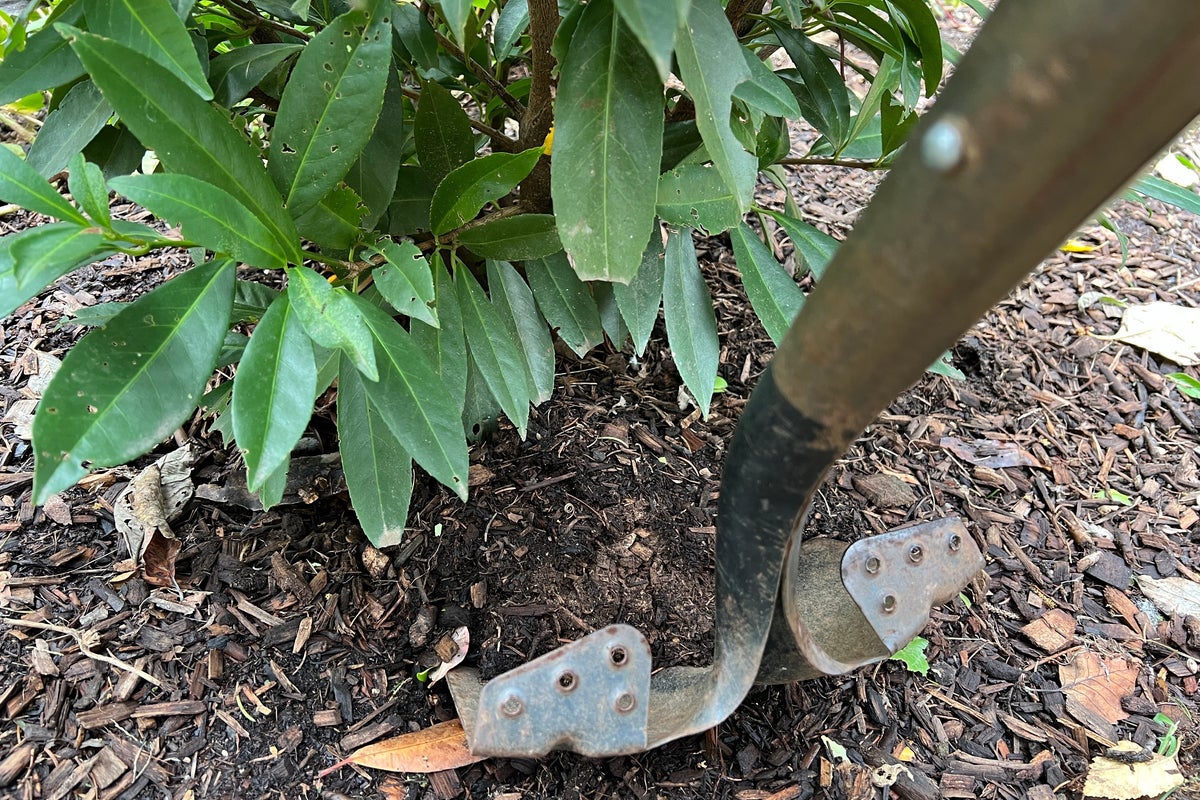
It’s the end of the gardening season, and those of us who’ve endured a less-than-perfect layout may be itching to move shrubs around. But proper timing is imperative.
I inadvertently planted a Clethra bush too close to a peach tree, and their intertwining branches have been taunting me all summer. But because the Clethra is a late-season bloomer, I’ll have to wait a bit longer before I can safely move it.
As a general rule, shrubs (and perennials) that bloom in late summer and fall should be transplanted in spring, just after they emerge from dormancy. This timing provides ample time for roots to establish before the plant’s energy is redirected toward blooming.
Spring and early summer bloomers should be relocated in the fall, when their blossoms and, sometimes, foliage, are long gone.
Start with roots
Before attempting to dig up shrubs, research how deep and wide their roots typically grow. Shallow-rooted shrubs, like rhododendron, for instance, are easier to dig up than, say, manzanita, which have very deep root systems. Take the plant’s age into account, too, as mature shrubs will have larger roots than younger ones.
Your findings will guide your digging: New holes should be as close to twice the width of roots as possible -- and exactly as deep.
Always dig a hole for the plant’s new home before removing it from the ground to minimize root exposure.
When possible, gently tie the plant’s branches together to get a better view of the area you’re digging. This step also helps prevent eye injuries from errant stems.
Take care to dig up as much of the roots as possible, plunging a sharp-edged shovel into the soil at what you estimate to be the roots’ farthest point and working your way around the perimeter of the plant. Then, retrace your steps, this time with more force to insert the tool deeply enough to lift roots out of the ground from underneath.
Tips on planting
To avoid losing soil and damaging roots — as well as your back — place the entire shrub onto a tarp and drag the tarp to the new hole you’ve prepared.
Carefully slide the rootball into the hole and assess its depth. If necessary, remove the plant from the hole to add or remove soil as needed to ensure the point where its roots meet the trunk —the plant’s crown —sits at the same level it was previously.
Plant too deeply, and the crown and trunk will eventually rot; too shallow, and the roots will dry out, suffer sun and cold damage, and struggle to spread horizontally.
When you’re satisfied the shrub is sitting straight and at the correct depth, begin backfilling the hole with soil, stopping periodically to firmly tamp it down to eliminate air pockets. Water the soil halfway through, then resume backfilling and tamping. Water the soil again, then apply mulch over the entire root zone to retain soil moisture, regulate soil temperature and repel weeds.
Water the plant regularly through frost during the entire first year in its new home, but don’t fertilize yet.
Apply a slow-release, low-nitrogen fertilizer in mid-to-late spring. Doing so earlier would force the plant to allocate its limited energy to growth rather than recovery and root development.
Allowing transplants time to settle in can mean the difference between a struggling shrub and one that thrives for years to come.
___
Jessica Damiano writes weekly gardening columns for the AP and publishes the award-winning Weekly Dirt Newsletter. You can sign up here for weekly gardening tips and advice.
___
For more AP gardening stories, go to https://apnews.com/hub/gardening.
Prince Andrew told to leave public life forever after embarrassing royals: Latest
‘Unrecorded meetings and handshake’: Damning verdict of Afghan data breach probe
High street banks offer worse interest rates - as new 4.75% account hits market
Covid rules went ‘too far’ for children - and they paid the price, Johnson says
Target shopper gets $11.3 million after falling in parking lot, breaking four bones
Brexit had bigger impact on Britain’s economy than critics predicted, Reeves says







